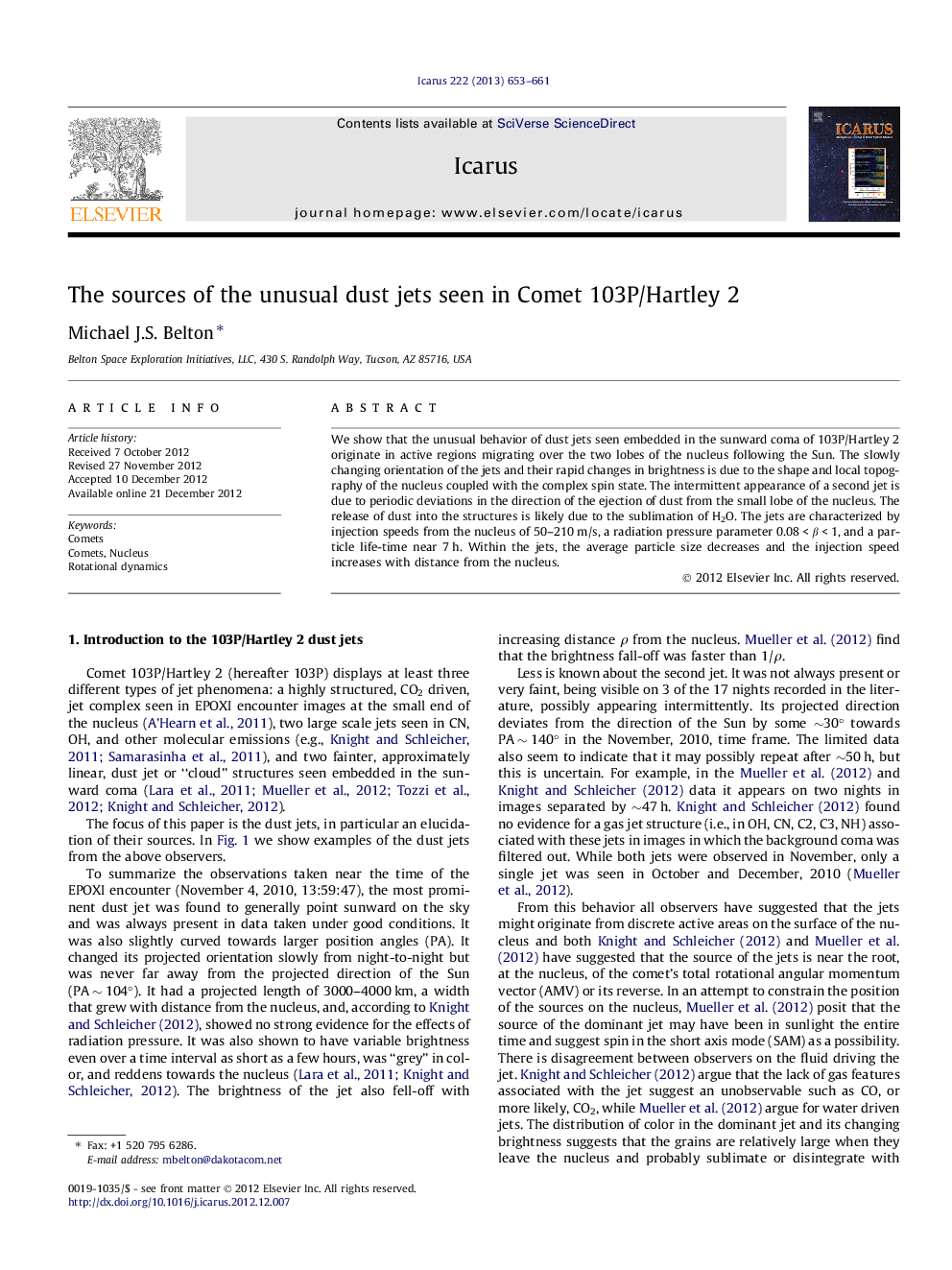| Article ID | Journal | Published Year | Pages | File Type |
|---|---|---|---|---|
| 1773327 | Icarus | 2013 | 9 Pages |
We show that the unusual behavior of dust jets seen embedded in the sunward coma of 103P/Hartley 2 originate in active regions migrating over the two lobes of the nucleus following the Sun. The slowly changing orientation of the jets and their rapid changes in brightness is due to the shape and local topography of the nucleus coupled with the complex spin state. The intermittent appearance of a second jet is due to periodic deviations in the direction of the ejection of dust from the small lobe of the nucleus. The release of dust into the structures is likely due to the sublimation of H2O. The jets are characterized by injection speeds from the nucleus of 50–210 m/s, a radiation pressure parameter 0.08 < β < 1, and a particle life-time near 7 h. Within the jets, the average particle size decreases and the injection speed increases with distance from the nucleus.
► The dust jets in Comet 103P arise from the sub-solar region of each lobe of the nucleus. ► Their changing directional properties are due to the comet’s excited rotation state. ► Their curvature and extent is due to solar radiation pressure and a finite lifetime for the particles.
